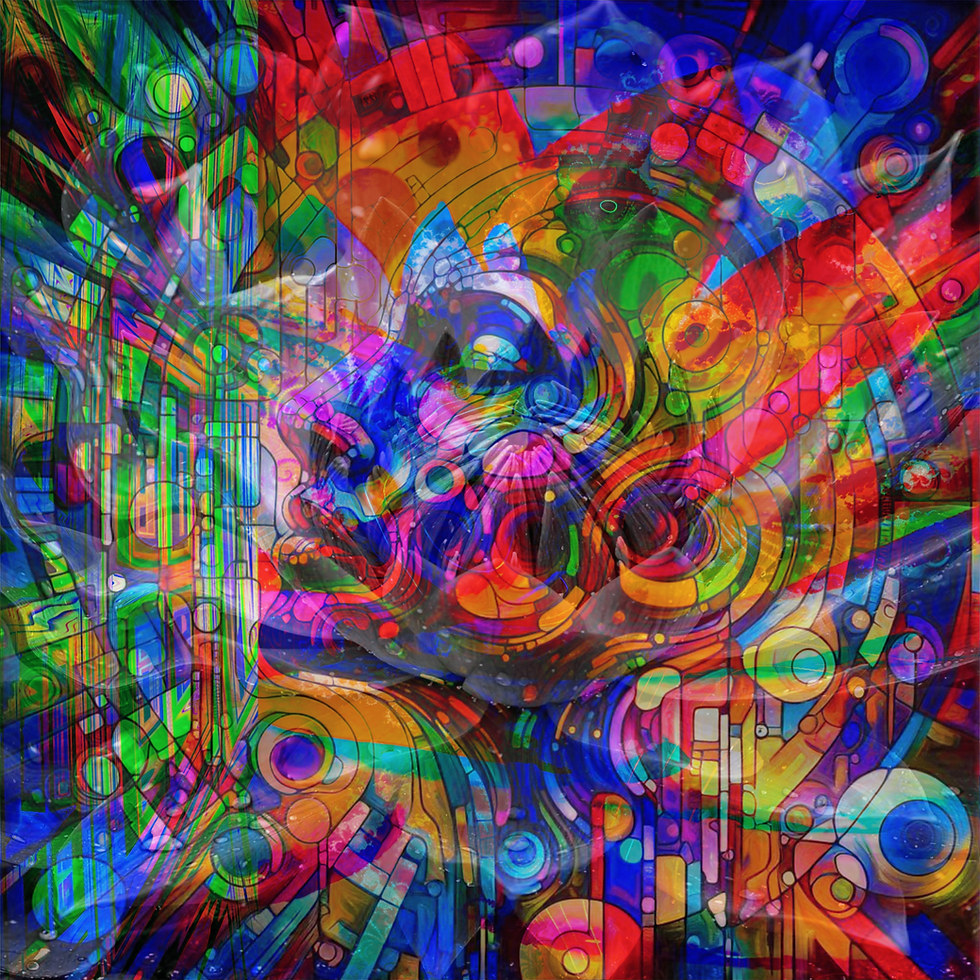Unveiling the Power of Creative Design in Cultivating Mental Wellness: A Fresh Perspective
- Nov 5, 2024
- 4 min read

Creative design is not just about making things look pretty; it deeply influences our mental well-being. In a world filled with stress and demands, tapping into the connection between creativity and mental health can lead us to a more balanced life. This article explores how innovative design can not only beautify our surroundings but also support our mental health and emotional well-being.
Understanding the Connection Between Creative Design and Mental Wellness
Our environment significantly influences our mental state. A well-designed space can improve moods, boost productivity, and encourage calmness. Research indicates that elements such as color, texture, lighting, and spatial arrangement can reduce stress and promote positive emotions.
For example, a study showed that spending just 10 minutes in a space filled with natural elements can reduce cortisol levels, the hormone linked to stress, by up to 25%. On the other hand, environments filled with clutter can increase feelings of anxiety and distraction. Recognizing this connection, we can utilize thoughtful design as a therapeutic strategy for our daily environments.
The Role of Color Psychology
Color psychology is a powerful tool for creating spaces that promote mental wellness. Different colors elicit emotional responses, and understanding these can enhance our surroundings dramatically.
Blue: Often associated with tranquility, blue can foster a calm atmosphere, making it perfect for bedrooms and meditation areas.
Yellow: This bright color is known to improve mood and stimulate creativity, making it ideal for spaces meant for brainstorming, such as studios or classrooms.
Green: Symbolizing nature, green promotes feelings of relaxation and renewal, which can be beneficial in living areas or gardens.
Lighting also plays a crucial role in color perception. For instance, maximizing natural light can enhance the vibrancy of colors, creating energizing spaces. Conversely, soft lighting accentuates calming colors, adding to the serenity of a room.
Nature-Inspired Design Elements
Bringing nature into our spaces is a highly effective strategy for improving mental wellness. Numerous studies show that exposure to nature can elevate mood and increase happiness. Here’s how to incorporate natural elements into your living and working environments:
Plants: Including indoor plants not only adds beauty but also purifies the air. Research shows that having several plants in an office can improve concentration by up to 15%.
Natural Light: Increasing exposure to natural light can enhance mood and energy levels. Studies suggest that people who work in spaces with ample daylight are 18% more productive.
Natural Materials: Using materials like wood, stone, and fabrics inspired by nature creates a soothing atmosphere, promoting a sense of relaxation.
Biophilic Design: Incorporating elements such as living green walls or water features creates a calming environment that fosters a connection with nature, which has been shown to reduce feelings of stress and anxiety.
Mindfulness in Design Practices
Mindfulness is a growing trend in mental well-being, and incorporating it into design can create spaces that serve as peaceful retreats. Consider these mindful design principles:
1. Minimalism
A minimalist approach simplifies surroundings and reduces mental clutter. By intentionally choosing fewer items that bring joy, a tranquil space is achieved, aiding focus and clarity.
2. Intentional Spaces
Designing with purpose influences how people use spaces. For instance, a cozy corner with comfortable seating can inspire relaxation, whereas open areas encourage social interaction.
3. Personalization
Adding personal touches—like family photos, artwork, or cherished objects—can create a sense of security and belonging. Personal elements remind us of positive experiences, enhancing our emotional comfort in a space.
Art and Creativity as Therapeutic Tools
Engaging in creative activities has been shown to significantly benefit mental health. Creative expressions, whether through painting or crafting, help individuals process feelings and reduce anxiety.
1. Creative Spaces
Dedicate areas specifically for creativity, such as an art nook or a writing desk. These dedicated spaces encourage regular artistic exploration, leading to improved mental well-being.
2. Community Art Projects
Participating in group art activities fosters connection and community spirit. According to a study conducted by Art for Health, individuals involved in community art projects reported an increase in well-being and a stronger sense of belonging, with 70% indicating better mental health outcomes.
The Future of Creative Design in Mental Health
As awareness of mental health grows, the role of creative design in therapeutic practices will likely expand. Some emerging trends include:
Healing Gardens: Designed for tranquility, healing gardens are becoming more common in healthcare settings. These spaces not only provide a serene environment but also enhance the healing process.
Virtual Reality: Technologies creating immersive experiences for relaxation and mindfulness are on the rise, offering new ways to foster mental wellness.
Community-Inspired Spaces: Designing public areas that foster social interaction and well-being is becoming essential for urban planners. These spaces can reduce loneliness and promote mental health at a community level.
Embracing Creative Design for Better Mental Health
Creative design serves as a crucial tool for nurturing mental wellness. By understanding how elements like color, nature, mindfulness, and art affect our emotional states, we can create environments that heal and inspire. The journey to improve mental wellness is a personal one, but with intentional design choices, everyone can create spaces that offer solace and motivation.
As we move forward, championing creative design can transform our environments and our lives. By valuing design in our everyday spaces, we pave the way for a more balanced and fulfilling existence, where creativity and mental health thrive together.





Comments